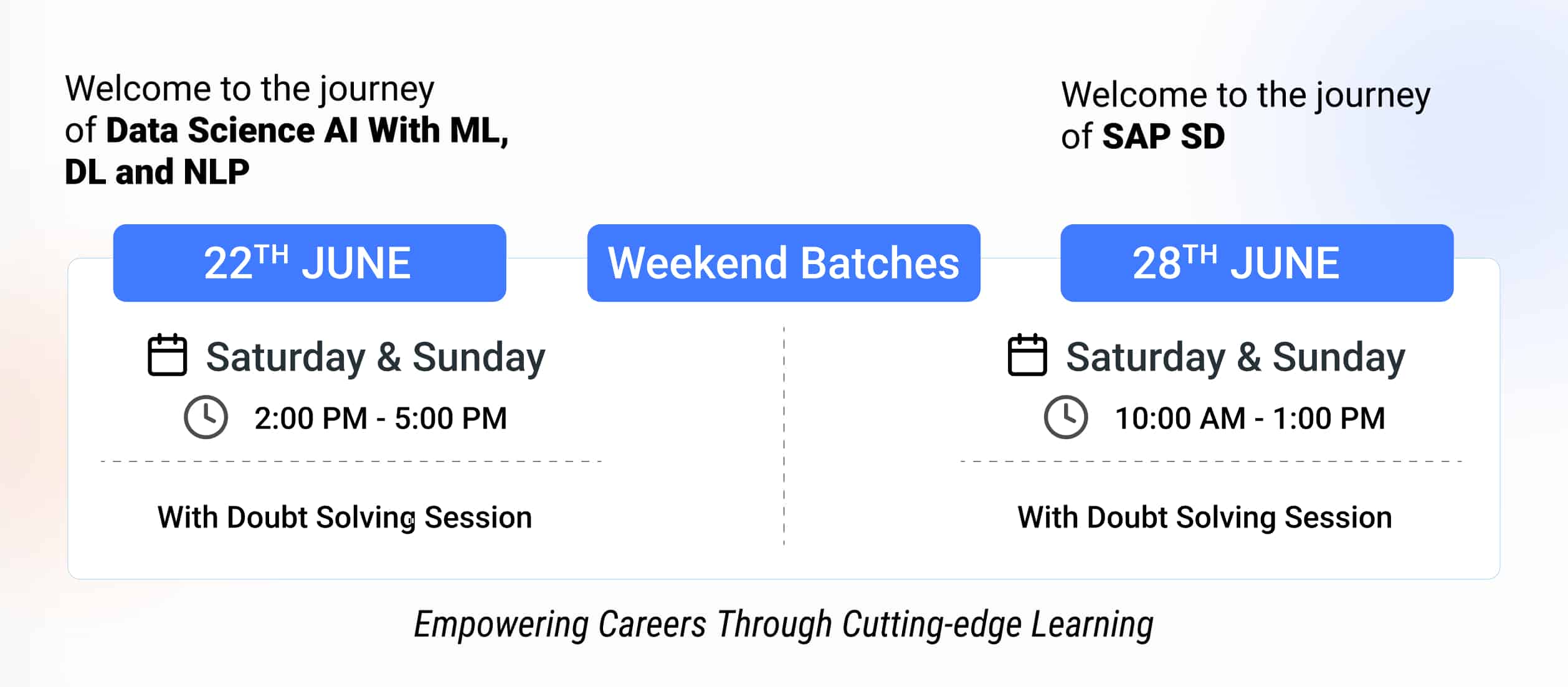Learn All Basic Concepts of SAP ABAP Quickly and Easily

SAP ABAP (Advanced Business Application Programming) is a high-level programming language used for developing programs withinside the SAP ecosystem. It gives developers with a powerful set of gadget and features to assemble strong and scalable company solutions. In this blog, titled “Basic Concepts of SAP ABAP,” we’re capable of find out the vital thoughts of SAP ABAP, equipping you with a sturdy foundation for SAP development. Our goal is to provide you with a whole understanding of the vital factor requirements and techniques that underpin SAP ABAP programming. By delving into the ones middle thoughts, you may benefit the expertise vital to excel in SAP ABAP development and loose up its whole ability for developing cutting-edge and innovative solutions. So let’s dive in and find out the building blocks of SAP ABAP programming.studies sap abap
Basic Concepts of SAP ABAP:
Data Types and Variables
In SAP ABAP, facts sorts define the sort of facts that can be stored and manipulated in a software program. Here are some generally used facts sorts:
• Character (CHAR): Used for storing alphanumeric characters.
• Numeric (NUMC, NUMCn): Used for storing numeric values.
• Date (DATS): Used for storing dates.
• Time (TIMS): Used for storing time values.
Variables in SAP ABAP are used to hold facts withinside the direction of software program execution. They are declared generally used control structures in SAP ABAP:
• IF-ELSE: Allows conditional execution based totally mostly on a chosen scenario.
• CASE: Enables a couple of branching based totally mostly on one in every of a type situations.
• LOOP: Repeats a block of code until a certain scenario is met.
• WHILE: Repeats a block of code on the identical time as a chosen scenario is true.
Basic Concepts of SAP ABAP: Functions and Methods
Functions and techniques are reusable blocks of code that perform unique tasks. They encapsulate a hard and fast of instructions, making code modular and promoting reusability.
• Functions: SAP ABAP gives a substantial type of incorporated capabilities for severa operations, together with mathematical calculations, string manipulation, and date/time processing.
• Methods: Methods are similar to capabilities but are associated with a specific object or elegance. They encapsulate behavior and might access the attributes and techniques of the elegance they belong to.
Database Operations
SAP ABAP permits seamless interaction with underlying databases to hold, retrieve, and modify facts. The most generally used database operations include:
• SELECT: Retrieves facts from database tables based totally mostly on exact situations.
• INSERT: Adds new facts facts into the database.
• UPDATE: Modifies gift facts facts withinside the database.
• DELETE: Removes facts facts from the database.
Exception Handling
Exception managing is vital for managing errors and awesome situations which can upward push up withinside the direction of software program execution. SAP ABAP gives mechanisms to cope with exceptions gracefully and prevent software program termination. Key components of exception managing include:
• TRY-CATCH: Allows the execution of a block of code internal a “try” block. If an exception occurs, the corresponding “seize” block is executed, allowing the managing of the exception.
• RAISE: Raises an exception explicitly at runtime. It is used even as a specific scenario is met, and this gadget wants to react accordingly.
Exception managing ensures the robustness of SAP ABAP programs and enhances mistakes management.
SAP Managed Services via GTR Academy
Modularization Techniques
Modularization is a vital factor of SAP ABAP development, promoting code reusability, maintainability, and readability. Some well-known modularization techniques include:
• Subroutines: Subroutines are self-contained sections of code that can be called from a couple of locations internal a software program.
• Function Modules: Function modules are standalone devices of functionality that can be called from one-of-a-kind programs or structures, promoting code reuse for the duration of one in every of a type programs.
• Classes: Classes are the building blocks of object-oriented programming in SAP ABAP. They encapsulate facts and behavior, taking into account the creation of gadgets that interact with each one-of-a-kind.
• Includes: Includes are reusable code snippets that can be inserted into one in every of a type programs. They help in modularizing code and promoting consistency for the duration of a couple of programs.
• By leveraging the ones modularization techniques, developers can create inexperienced and maintainable code, reducing redundancy and improving everyday development productivity.
User Interface Development
• Screen Painter: Screen Painter is an ABAP Workbench tool that permits developers to format user-nice video display units for collecting and displaying facts.
• Web Dynpro: Web Dynpro is a powerful UI framework for developing web-based totally completely programs withinside the SAP environment. It gives a drag-and-drop interface for designing interactive and responsive UIs.
• Floorplan Manager: Floorplan Manager is a framework that simplifies the development of complex UIs, together with SAP Business Suite programs. It gives pre-defined templates and gadget for developing constant and intuitive UIs.
By making use of these UI development techniques, developers can create visually appealing and user-nice interfaces that enhance the overall usability of SAP programs.
Debugging and Testing
Debugging and attempting out are essential steps withinside the development method to find out and resolve issues. SAP ABAP offers strong gadget for debugging and attempting out programs, including:
• ABAP Debugger: ABAP Debugger permits developers to step through this gadget code, examine variables, and study this gadget’s flow withinside the direction of runtime. It allows in identifying and fixing suitable judgment errors and inconsistencies.
• Unit Testing Framework: SAP ABAP gives a incorporated unit attempting out framework, allowing developers to create and execute unit exams for person software program components. It ensures the correctness of the code and allows seize issues early withinside the development cycle.






